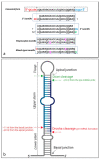Emerging Role of isomiRs in Cancer: State of the Art and Recent Advances
- PMID: 34573429
- PMCID: PMC8469436
- DOI: 10.3390/genes12091447
Emerging Role of isomiRs in Cancer: State of the Art and Recent Advances
Abstract
The advent of Next Generation Sequencing technologies brought with it the discovery of several microRNA (miRNA) variants of heterogeneous lengths and/or sequences. Initially ascribed to sequencing errors/artifacts, these isoforms, named isomiRs, are now considered non-canonical variants that originate from physiological processes affecting the canonical miRNA biogenesis. To date, accurate IsomiRs abundance, biological activity, and functions are not completely understood; however, the study of isomiR biology is an area of great interest due to their high frequency in the human miRNome, their putative functions in cooperating with the canonical miRNAs, and potential for exhibiting novel functional roles. The discovery of isomiRs highlighted the complexity of the small RNA transcriptional landscape in several diseases, including cancer. In this field, the study of isomiRs could provide further insights into the miRNA biology and its implication in oncogenesis, possibly providing putative new cancer diagnostic, prognostic, and predictive biomarkers as well. In this review, a comprehensive overview of the state of research on isomiRs in different cancer types, including the most common tumors such as breast cancer, colorectal cancer, melanoma, and prostate cancer, as well as in the less frequent tumors, as for example brain tumors and hematological malignancies, will be summarized and discussed.
Keywords: cancer; expression pattern; isomiRs; miRNA variants; miRNome.
Conflict of interest statement
The authors declare no conflict of interest.
Figures

References
Publication types
MeSH terms
Substances
LinkOut - more resources
Full Text Sources
Medical

